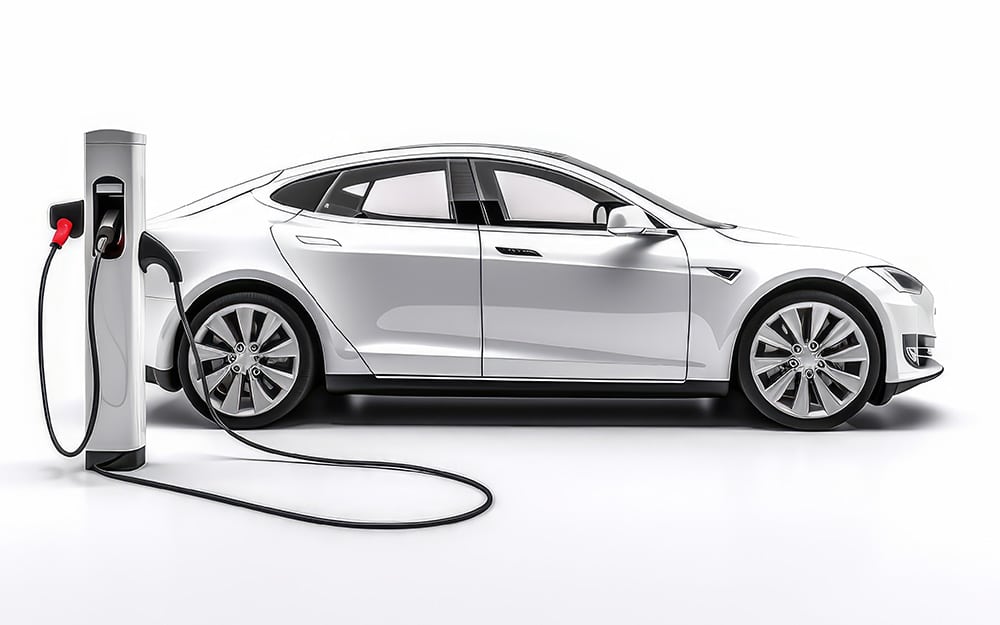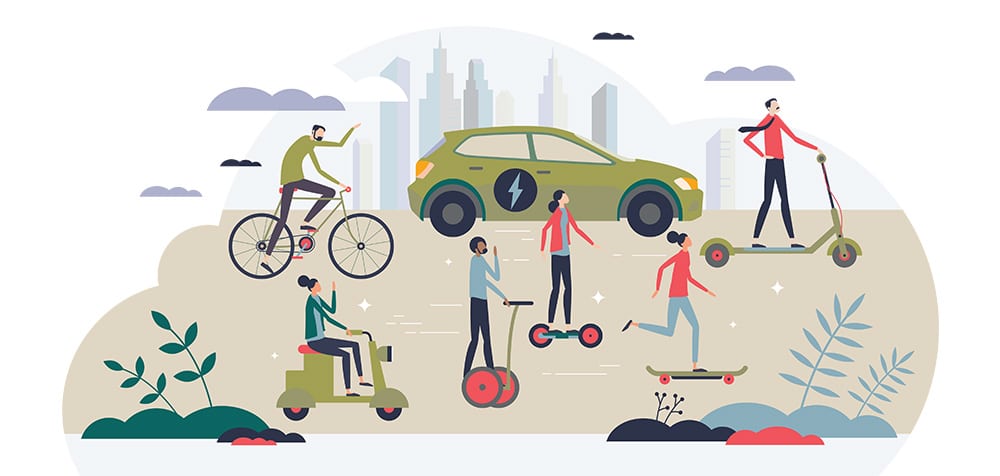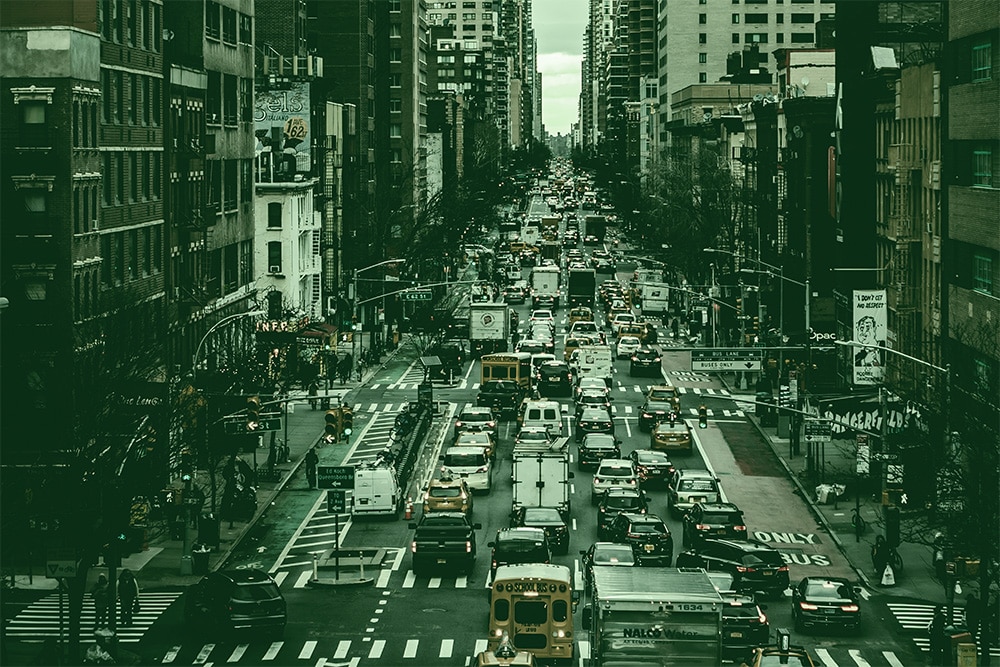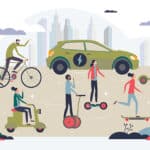Home » October 2023 » Curb Management and Transit Equity
The Green Impact
Curb Management and Transit Equity
stock.adobe.com / Andrii
Three issues are at the forefront of urban mobility—curb management, climate change, and equity. Visit any major city and you’ll see myriad ways curb management is being addressed in reasonable and, arguably, not-so-reasonable ways while the usual challenges of congestion and parking remain. Mobility equity is similarly problematic for those whose primary means of getting places, especially work, is some form of public transit. Transit service isn’t always reliable or conveniently available, even in the most vibrant urban areas.
Now, consider how to address both curb management and transit equity issues sustainably.
New York City recently started a pilot program called Smart Curbs to consider better ways to manage curbs in a 15-block area of the Upper West Side. The pilot is part of a longer-term goal to move traffic, reduce congestion, and promote sustainability by reducing tailpipe emissions and improving air quality. Additional efforts will include tolling based on peak or off-peak hours.5 The ideal outcome for Smart Curbs will be a decrease in double parking that will reduce congestion.
Freight and commercial goods are an important and growing part of the economy, but also a significant contributor to emissions and poor air quality. Seattle is pushing for zero-emission freight and cargo delivery in support of the zero-emission urban goods movement. Online shopping surged post-pandemic, increasing the emissions generated by the logistics industry. Consumer Reports, noting a 2020 study from Stand.earth, reported that the last leg of home deliveries “was responsible for more than 4.5 million tons of carbon dioxide emissions in 2020” alone.4 Walker Consultants and C40 Cities developed a plan with the Seattle Department of Transportation, where the goal is to create zero-emission loading zones and promote more use of e-cargo bike deliveries.2
“Small businesses and freight companies need many different options,” said Chrissy Mancini Nichols, National Director of Curb Management and New Mobility for Walker Consultants. “The pizza shop, the florist—they all need to make deliveries throughout the day, and sometimes the best option to make that delivery is something other than a car.”
E-cargo bikes could be part of the larger strategy to reduce emissions, congestion, and reduce vehicle speeds and conflicts, especially in pedestrian heavy neighborhoods.
Seattle’s goal is that 30% of all commercial goods delivery be zero-emissions by 2030. The city’s Climate Action Plan established a goal to reduce greenhouse gas emissions 58% below 2008 levels by 2030 and to achieve zero net core emissions by 2050.3
“One more immediate opportunity for dense urban areas is to update transit service for post-COVID travel patterns—more frequent all-day service to multiple destination types and less focus on rush-hour commuting to offices,” said Greg Strangeways, a consultant with Walker Consultants, who specializes in urban transit strategies.
Peoria County in Illinois is evaluating how the built environment, including pedestrian, bicycle, and transit infrastructure and services, impact economic opportunity and access to essential services in an underserved community of Southside Peoria. The study, done in partnership with the community and funded by the Illinois Department of Transportation, looked at the impacts of the current transportation system and ways to improve access.
“The project is very community driven. Our recommendations, including example practices and strategies, have been based on community feedback from partners or community feedback from our survey,” said Renata Langis, a planner with Walker Consultants who has been working on the study. She added that the community wants to take advantage of other services besides buses. An affordable bike share program and a late-night ride share program are two examples of equitable strategies the community wants and will use because many residents work outside of the typical 9 a.m.-5 p.m. schedules when transit services are available. The study noted the community is challenged to find good quality fresh food, an issue referred to as a “food desert,” so access to varied, sustainable transit is essential to obtain healthy foods. Cost is often a barrier, and many people using public transportation do not own a vehicle. More robust options will make transit more affordable, access to services more effortless, and more sustainable by promoting efficiencies that, in turn, reduce emissions. Offering reduced fares, mobile ticketing, cash payment options, and even mobile food pantries could improve convenience and increase ridership while addressing the equity concerns.1
Existing fixed transit routes could someday be used in more sustainable ways but in a slightly different context.
“In the longer term, autonomous vehicles may be more likely on fixed-route transit before coming to taxis or private vehicles,” Strangeways said. “The challenges with fixed routes are less, and the potential benefits of offering more transit service due to reduced labor costs are so much greater.”
Discussions around the future of transportation for people and goods must consider ongoing strategies for curb management and transit equity. The push toward zero emissions combined with updated policies to mitigate congestion will help improve air quality. Mobility equity, especially in urban areas, is a win-win because it gives people easier access to their jobs, and in food deserts or areas where services may be limited, it promotes healthy choices. ◆
References
- American Council for an Energy-Efficient Economy. (2023, August). State and Local Policy Database. Baker, M., & Langis, R. (2023). Peoria County (61605) Transportation Equity Study Advisory Committee Meeting. Walker Consultants.
- Bancroft, E. (2023, March 31). SDOT Blog. Retrieved from SDOT Blog.
- City of Seattle, Office of Sustainability and Environment. (2023). Transportation and Electricification Blueprint. Retrieved from Seattle.gov.
- Waddell, K. (2022, July 12). Consumer Reports. Retrieved from Consumer Reports.
- Woodhouse, S. (2023, September 5). Bloomberg. Retrieved from Bloomberg.
Victor Hill, CAPP, MPA is a mobility and transportation planner with Walker Consultants, a member of IPMI's CAPP Certification Board, and a member of the IPMI Sustainable Mobility Task Force.
-
Victor Hill, CAPPhttps://parking-mobility-magazine.org/author/victor-hill-capp/April 22, 2022
-
Victor Hill, CAPPhttps://parking-mobility-magazine.org/author/victor-hill-capp/September 6, 2022
-
Victor Hill, CAPPhttps://parking-mobility-magazine.org/author/victor-hill-capp/February 6, 2024

Electric Vehicle Charging Operations Research
Preliminary Results

Exploring the Power of Smart Parking
An Ally for a Greener Tomorrow

Get to the Point
Linking Multimodal Connections



![Sustainable Mobility Member logo_shutterstock_305262863 [Converted] Ipma member sustainable mobility task force.](https://parking-mobility-magazine.org/wp-content/uploads/elementor/thumbs/Sustainable-Mobility-Member-logo_shutterstock_305262863-Converted-qi85lrm0nlk9jyrah4opzowb1bvglurvlt8ej0uors.jpg)





